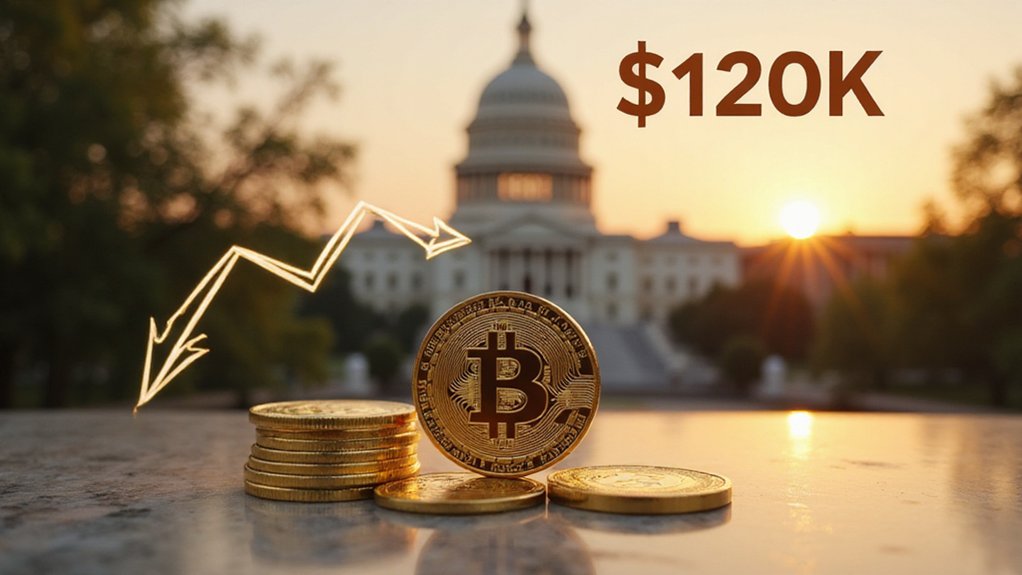While the cryptocurrency sector has weathered regulatory storms that would have sunk lesser financial innovations, Bitcoin now finds itself steering through an unexpectedly favorable legislative tailwind that promises to reshape the digital asset landscape in ways both profound and potentially perilous.
The current administration’s decidedly pro-crypto stance represents a remarkable pivot from previous regulatory hostility. The Department of Justice’s National Cryptocurrency Enforcement Team has been disbanded—a move that signals either mature regulatory confidence or concerning oversight abandonment, depending on one’s perspective.
The administration’s cryptocurrency embrace marks either regulatory evolution or dangerous deregulation—perspective determines which narrative prevails.
Meanwhile, the Securities and Exchange Commission is dropping major lawsuits against crypto companies with the enthusiasm of a prosecutor discovering exculpatory evidence.
Congressional momentum appears equally bullish. The House of Representatives has declared a “Crypto Week” to advance pivotal legislation, including the CLARITY Act and GENIUS Act, while the Senate pursues landmark stablecoin regulation. This bipartisan approach suggests cryptocurrency has achieved that rare Washington commodity: genuine consensus (albeit one that conveniently emerged alongside Bitcoin’s price appreciation).
The stablecoin regulatory framework deserves particular attention, as these dollar-pegged assets could serve as the regulatory Trojan horse for broader cryptocurrency acceptance. Senator Elizabeth Warren’s concerns about legislative loopholes reflect legitimate consumer protection anxieties, yet the market seems more interested in regulatory clarity than regulatory strictness. The President’s Working Group established in January 2025 is actively developing comprehensive regulatory frameworks for stablecoins while evaluating a national digital assets stockpile. The SAB 122 rescission has removed significant barriers for banks to develop digital asset custody solutions, aligning crypto asset treatment with traditional assets.
Bitcoin’s trajectory toward $120,000 hinges on whether institutional investors interpret this deregulatory environment as opportunity or chaos. Reduced oversight could ignite innovation and capital flows, potentially driving unprecedented price appreciation. The January 2024 approval of spot Bitcoin ETFs generated $4.6 billion in first-day trading volume, demonstrating the massive institutional appetite for regulated cryptocurrency investment vehicles.
However, the same regulatory laxity might introduce volatility that sends Bitcoin careening in directions investors hadn’t anticipated.
The mathematical pathway to $120,000 requires sustained institutional adoption, which depends heavily on regulatory predictability rather than regulatory absence. If stablecoin legislation succeeds and establishes precedent for thoughtful cryptocurrency governance, Bitcoin could benefit from the institutional confidence such frameworks provide.
Yet the question remains whether this legislative enthusiasm represents genuine understanding of cryptocurrency’s potential or merely political opportunism riding Bitcoin’s coattails. The answer may determine whether Bitcoin soars to new heights or discovers that regulatory tailwinds can shift direction with remarkable speed.









